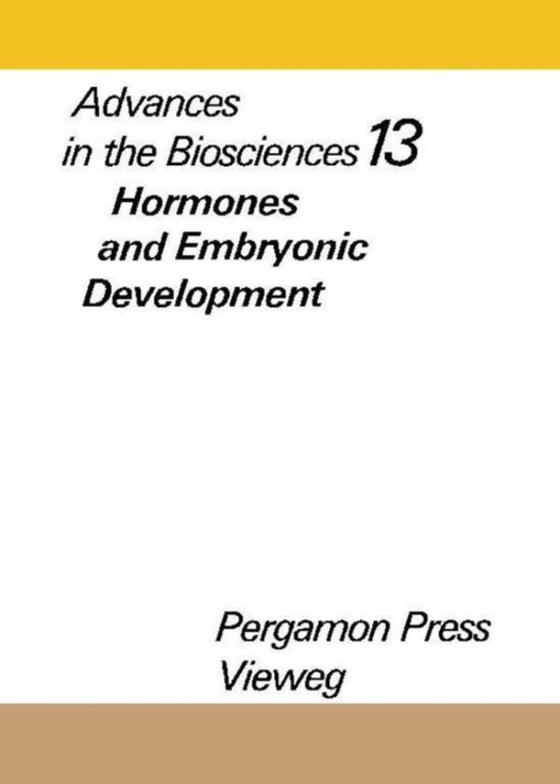
Hormones and Embryonic Development e-bog
473,39 DKK
(inkl. moms 591,74 DKK)
Advances in the Biosciences 13: Hormones and Embryonic Development investigates various aspects of hormones and embryonic development, including their physiological and pharmacological effects. More specifically, this volume considers which maternal hormones are essential for normal mammalian embryonic development, as well as the time course of the occurrence of endocrine systems during mammali...
E-bog
473,39 DKK
Forlag
Pergamon
Udgivet
22 oktober 2013
Længde
260 sider
Genrer
Endocrinology
Sprog
English
Format
pdf
Beskyttelse
LCP
ISBN
9781483151717
Advances in the Biosciences 13: Hormones and Embryonic Development investigates various aspects of hormones and embryonic development, including their physiological and pharmacological effects. More specifically, this volume considers which maternal hormones are essential for normal mammalian embryonic development, as well as the time course of the occurrence of endocrine systems during mammalian fetal development. In addition, it examines the role of maternal or fetal hormones in the induction and differentiation processes during embryonic or fetal development. Comprised of 13 chapters, this book begins with an analysis of the metabolic effects of insulin and glucagon in fetal and newborn rats, as well as their physiologic significance during the perinatal period in rat and other species. The next chapter deals with sexual differentiation in the rat fetus; how hormones regulate sexual development and disrupt sexual differentiation; the role of progesterone and estrone in pregnant rats fed a protein-free diet; and effects of brain implants of testosterone propionate in newborn hamsters on sexual differentiation. The link between diethylstilbestrol ingestion during pregnancy and development of clear-cell adenocarcinoma in the vagina and cervix of the female offspring is also examined. This monograph will be of interest to biologists, bioscientists, physiologists, and pharmacologists.
 Dansk
Dansk

